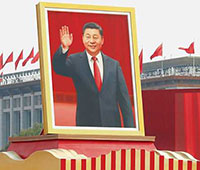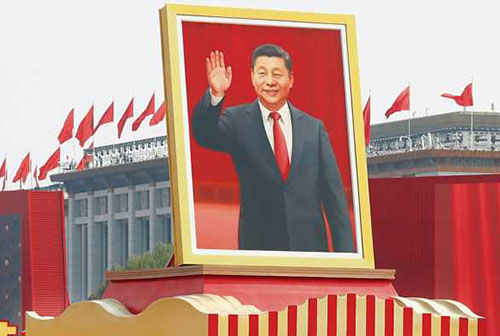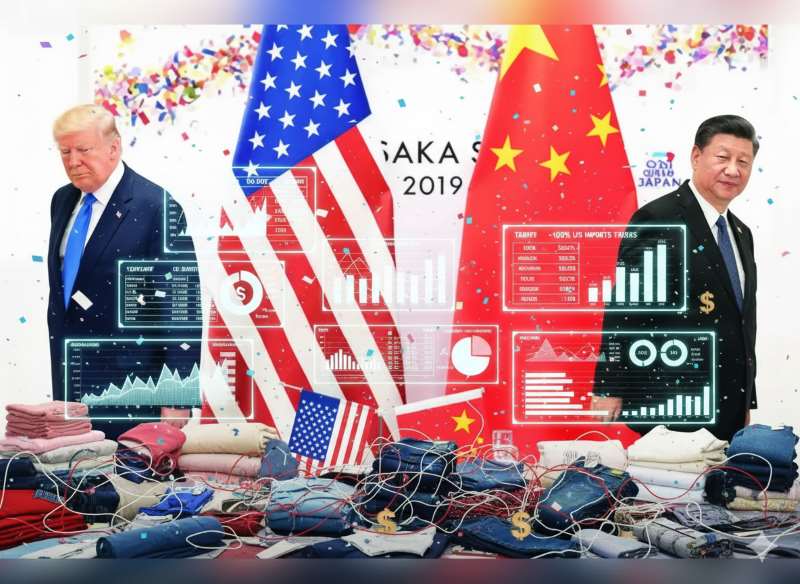"The subsidies given by its government and loans granted with low interest rates helped the Chinese textile industry to emerge as one of the top industries in the world. This coupled with zero per cent duty through the RCEP free trade agreement is likely to provide China with an open market, affecting medium and small textile players in India who are majorly dependent on the domestic market."
 The subsidies given by its government and loans granted with low interest rates helped the Chinese textile industry to emerge as one of the top industries in the world. This coupled with zero per cent duty through the RCEP free trade agreement is likely to provide China with an open market, affecting medium and small textile players in India who are majorly dependent on the domestic market.
The subsidies given by its government and loans granted with low interest rates helped the Chinese textile industry to emerge as one of the top industries in the world. This coupled with zero per cent duty through the RCEP free trade agreement is likely to provide China with an open market, affecting medium and small textile players in India who are majorly dependent on the domestic market.
During the last five years, India’s trade deficit with China increased to a whopping $711.298 billion. Imported Chinese goods are creating a havoc in the Indian system due to their gross undervaluation’ through congenital ‘mis-declaration. These grossly undervalued Chinese goods enter the Indian market through a fake certificate-of-origin of goods issued by a third country. This monopolised entry of Chinese goods renders the valuation rule inadequate, ineffective and obsolete.
Hasty decisions lead to a huge trade deficit
The Indian customs department is the most frontline professional organisation. However, custom officers are rarely consulted during the formulation of international trade policy or concluding multi-nation commercial agreements between India and foreign countries. The hasty decisions made by the government without a detailed analysis and feedback on real issues from ‘actual’ professionals are resulting in a humongous trade deficit with very little possibility of things improving in the near future.
rarely consulted during the formulation of international trade policy or concluding multi-nation commercial agreements between India and foreign countries. The hasty decisions made by the government without a detailed analysis and feedback on real issues from ‘actual’ professionals are resulting in a humongous trade deficit with very little possibility of things improving in the near future.
To grant further duty concessions to these Chinese goods will therefore, prove disastrous for the Indian industry as it will result in loss of tax, closure of industry, loss of jobs, rise of unemployment; social unrest; and finally, loss of foreign investors’ confidence.
Signing RCEP to result in huge losses
Ludhiana-based garment makers are seeking protection against cheap Chinese imports as they fear a huge industrial collapse and loss of employment. It is being realised that signing the RCEP agreement under such circumstances will result in huge losses for the Indian textile industry as not only do Chinese manufacturers and traders offer cheaper fabrics but the Chinese government also grants subsidies and loans to the textile industry at low interest rates.
China adopted a policy of currency devaluation between 1980 and 1992, to ‘promote exports and to restrain imports so as to improve China’s current account position.’ From the ratio of $1: 1.53 Chinese yuan in 1980, the latter had fallen to 8.72 yuan to a dollar. As a result, the country’s trade deficit of $7.7 billion in 1988 turned into a trade surplus of $8.74 billion in 1990 and by year end, its foreign exchange reserves rose to $28.6 billion. Today, that figure has swollen to $3 plus trillion.
To sustain this growth, China now aims to include India in the RCEP. India, therefore, needs to adopt a cautious approach as even a wrong decision can prove highly disastrous for its domestic market.












